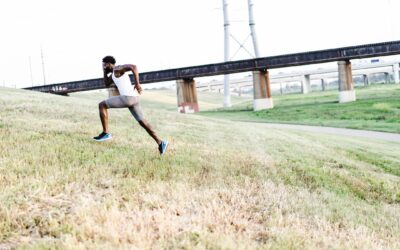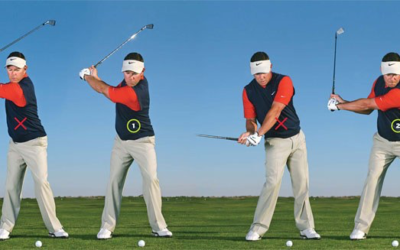You might find this hard to believe but the game of golf and fighting have a lot in common.
You read that right, fighting. Like boxing and MMA and the likes.
You might be thinking, how is that possible? How could one of the tamest and poised sports out there have anything in common with one of the most aggressive sports? Well, there are actually many shared principles, most of which are founded in physics. Read along and I will explain how all of these physics’ principles are useful tools to make your golf swing more consistent and much, MUCH, more powerful.
Martina Sprague wrote a book titled “Fighting Science.” If you are all about learning new things like I am, then I suggest you get yourself a copy and read this book. To save time, here is a link to the book on Amazon. There are so many insights into the physics of how the body moves and how fighters can be more powerful with their strikes. And lucky for you, I have taken what I learned in reading this book and applied to my interest in golf.
Here is a quick physics lesson disguised as golf tips…
Physics Principle #1: Balance
In golf, although you don’t have to worry about someone taking swings at you while you are focusing on your swing (unless your golf buddies are also your Fight Club buddies), you absolutely need to have good balance. Balance in golf is dynamic though. You must consider all planes of movement. Forward and backwards. Side to side. Up and down.
If you do not have good balance when you swing, you will not have a swing that is centered and you will not hit the ball in the center of the clubface. There is nothing that matters more in your golf swing than center face contact. Any strike of the golf ball that is off center will have more spin. This often leads to wayward shots, and a loss of distance. So…connecting the dots. If you want to hit the center of the clubface as often as possible, you better have good balance.
What is good balance? I’m glad you asked!
How Do I Know If My Stance Is A Balanced Stance?
When you set up, your stance should be about shoulder width apart. That will give you a good base, without compromising hip rotation. Like I said though, balance is dynamic. You also have to make sure that your stance is balanced over the middle of your feet (your arches) throughout your swing.
Lastly, you want to be sure that when you swing you don’t stand up. In the golf world, this is called loss of posture. In the physics world, you are taking an object with a low center of gravity (more stable) and elongating it which raises the center of gravity (less stable). That will cause you to compensate, which leads to loss of power and off-center hits. If you are low when you set up, you are stable. But…if you stand up as you swing you become much less stable, and more likely to be off balance (no bueno).
Physics Principle #2: Inertia
Our second physics vocab word is inertia. For those of us who are not up to date on our physics terms, Inertia is when an object (i.e.: your golf club) continues its motion unless it is altered by an external force (i.e.: your body).
So why is this so important? Inertia is important when it comes to your transition from backswing to downswing. It takes energy to make that switch and change the inertia of the golf club. Most golf patients that I see here at the clinic think faster equals farther. And while this is true, the speed must be used at the right time, and in the right direction.
Where Does Swing Speed Come Into Play?
If you are trying to increase your swing speed, try slowing down your backswing. This will decrease your inertia away from the ball and make it much easier for your body to change the direction of the club’s inertia. It will also allow you to bring it back to the ball with more speed. A large majority of the pro golfers have a backswing that is 3 times longer than their downswing. A simple drill to try is to count. As you take your backswing count 1, 2, 3. Once you get to 3 you should be at the top of your backswing. Then it should only take the count of 1 to return the club back to the ball.
Another quick note on speed. You want to be sure that your swing is at its peak when the club meets the ball, and even a little bit past it. Most amateurs have a club head speed that is slowing down once it is getting to the ball. Think of it from a fighter’s point of view. When they strike someone, they don’t think about landing their kick or punch on their opponent’s body part. They think about driving force all the way through it (i.e. speed through impact). Next time you are practicing, envision driving the club through the golf ball, not just having them meet squarely.
Class Dismissed
This concludes our physics lesson for the day. I hope you feel like you are back in your high school physics class, but with a much cooler teacher, and a better topic. And, I hope you learned a thing or two about golf and swing mechanics.
If you are looking for something else to read in addition to Fighting Science, I wrote a guide book that is specific to golf-related back pain. If golf related back pain is relatable to you, send me an email at info@sparkperformancept.com to request a FREE copy of this guide book!





